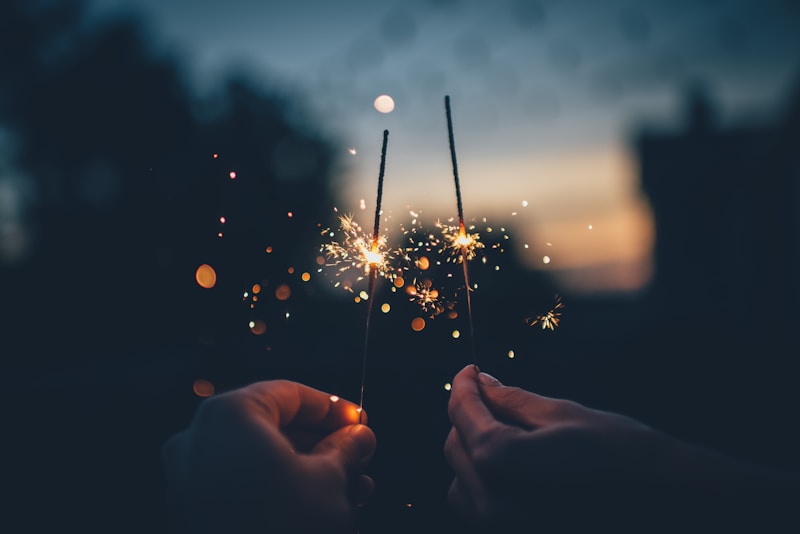10 Questions
What is the significance of exchanging red envelopes, or 'hongbao,' during Chinese New Year?
To bring good luck and prosperity to children and unmarried adults
Why is the preparation of a special dinner, known as the 'reunion dinner,' important during Chinese New Year?
To symbolize the unity and harmony of family members
Why are dumplings a significant part of the Chinese New Year menu?
They resemble ancient Chinese currency and are believed to bring wealth
What is the symbolic representation of fish in Chinese New Year celebrations?
Surplus and abundance
Why is the Chinese New Year considered a time of renewal and celebration?
As it symbolizes hope for good fortune in the coming year
What is the Chinese New Year also known as?
Spring Festival
What is the significance of the color red during Chinese New Year?
It wards off evil spirits
What did the Chinese New Year festival originally aim to do?
Ward off evil spirits and bring good luck
Which dynasty is the Chinese New Year festival believed to have originated from?
Shang Dynasty
What are common decorations used during Chinese New Year?
Red lanterns and paper cutouts
Study Notes
Chinese New Year: A Time of Renewal and Celebration
The Chinese New Year, also known as Lunar New Year, is a time of renewal and celebration that marks the beginning of a new lunar year. The holiday is steeped in history, traditions, and symbolism, and it is celebrated around the world by millions of people of Chinese descent. In this article, we will explore the history and origins of Chinese New Year, the decorations and symbols associated with the holiday, the traditions and customs that define it, and the various celebrations that take place around the world.
History and Origins
The origins of Chinese New Year can be traced back over 3,000 years to the Shang Dynasty. It is believed that the festival was originally a way to ward off evil spirits and bring good luck and fortune for the new year. Over time, the holiday evolved into a celebration of the arrival of spring, which is associated with the start of new beginnings and fresh starts.
Decorations and Symbols
One of the most recognizable aspects of Chinese New Year is the use of decorations and symbols. Red is a significant color during the holiday, as it is believed to ward off evil spirits. Homes are often decorated with red lanterns, paper cutouts, and couplets. The representations of animals, including the dragon and the phoenix, are also common decorations during the Chinese New Year.
Traditions and Customs
The Chinese New Year is marked by a number of traditions and customs, many of which involve family gatherings and festive meals. One of the most well-known customs is the exchange of red envelopes, called "hongbao," which are filled with money and given to children and unmarried adults. Another important tradition is the preparation of a special dinner, known as the "reunion dinner," which often includes symbolic dishes such as dumplings and fish.
Celebrations Around the World
Chinese New Year is celebrated not only in China but also in many other countries with large Chinese populations, including Taiwan, Hong Kong, Singapore, and Malaysia. In addition, there are significant Chinese diaspora communities in countries such as the United States, Canada, and Australia, where the holiday is also celebrated. Each community has its own unique way of celebrating the Chinese New Year, with parades, festivals, and other events marking the occasion.
Festive Foods
Food plays a central role in the Chinese New Year celebrations. Many families prepare special dishes to welcome the new year, with the menu often featuring symbolic foods. For example, dumplings, which are shaped like ancient Chinese currency, are believed to bring wealth and prosperity. Fish, another traditional dish, represents surplus and abundance, as the Chinese word for fish sounds similar to the word for "surplus."
In conclusion, the Chinese New Year is a time of renewal and celebration that is steeped in history, traditions, and symbolism. The holiday is marked by the use of decorations and symbols, the observance of customs and traditions, and the preparation of festive foods. Whether it is celebrated in China or in one of the many Chinese diaspora communities around the world, the Chinese New Year is a time of joy, unity, and hope for the future.
Explore the rich history, traditions, and symbolism of the Chinese New Year, also known as Lunar New Year, which is celebrated worldwide. Learn about the origins, decorations, symbols, traditions, customs, and festive foods associated with this significant holiday.
Make Your Own Quizzes and Flashcards
Convert your notes into interactive study material.




